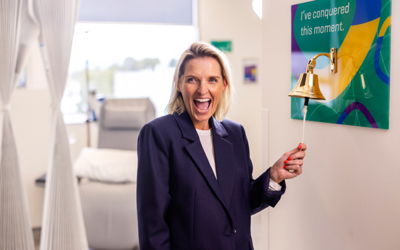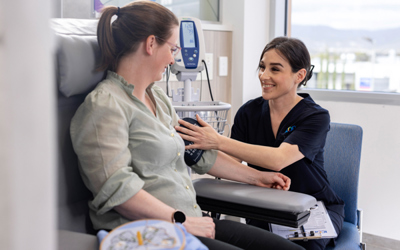Low-dose radiation therapy (LDRT) is a gentle, non-invasive treatment that uses tiny, precisely targeted doses of radiation to reduce inflammation and ease pain in tendons. Unlike radiation therapy for cancer, LDRT uses an ultra-low dose of radiation and typically causes minimal side effects.
LDRT may be suitable for people who have not found relief through physiotherapy or medication, are not suitable for surgery, or prefer a non-surgical approach.
Supported by international clinical research, it can complement standard treatments to improve mobility, reduce discomfort, and support a return to everyday activities.
What Are Tendinopathies?
Tendinopathy describes pain and dysfunction in a tendon. It can involve short-term inflammation (tendinitis) or longer-term thickening and degeneration (tendinosis).
Common sites include the:
Shoulder (rotator cuff)
Elbow (tennis or golfer’s elbow)
Achilles tendon (back of ankle)
Patellar tendon (knee)
Symptoms
Typical symptoms include:
Localised pain or tenderness that worsens with movement
Swelling or thickening around the tendon
A grating or crackling sensation when moving the joint
Stiffness and loss of mobility
How LDRT works
LDRT gently calms the inflammatory response in the tendon to:
Reduce pain and swelling
Improve flexibility and strength
Support recovery alongside exercise and rehabilitation
Treatment is typically given as six short sessions over one to two weeks, delivering a total of around 3 Gray (Gy) – only a fraction of a cancer treatment dose.
“Chronic tendon pain can take a real toll on daily life. Low-dose radiation therapy has been shown to safely reduce pain and restore mobility, helping patients return to the activities they enjoy.”
Who Might Benefit
Adults with ongoing tendon pain despite physiotherapy or medication
People unsuitable for, or wishing to avoid, surgery
Younger patients with treatment-resistant tendinopathies
What to Expect
Consultation and assessment – Your specialist will review symptoms, imaging, and medical history.
Personalised plan – A treatment plan is tailored to target the affected tendon.
Treatment sessions – Each session is quick, painless, and requires no anaesthetic.
Follow-up care – We review your progress and provide additional support as needed.
Most patients resume normal activities immediately.
Side Effects
Side effects are rare and mild because of the very low dose. Some people may notice slight skin warmth or pinkness, which usually resolves quickly. Your clinician will discuss all potential risks beforehand.
Why choose Icon?
At Icon, we’re committed to delivering the best care possible, close to home. We combine advanced radiation technology with a team of experienced clinicians who specialise in treatments like LDRT. We’re here to:
Provide care grounded in international evidence and clinical expertise,
Deliver treatment that is safe, precise, and tailored to your needs, and
Work alongside your existing care team to ensure a coordinated approach.
Our focus is on helping you move more comfortably and regain quality of life, supported by a team who puts your care first.
For Patients
If you’d like to know whether LDRT might be right for you, our team is here to help. We can explain what to expect, answer your questions, and guide you on the next steps. Contact your nearest Icon centre to speak with one of our care team members.
For Referrers
Referrals can be made via Icon Doctor App, directly to our clinicians, or through major referral platforms.




